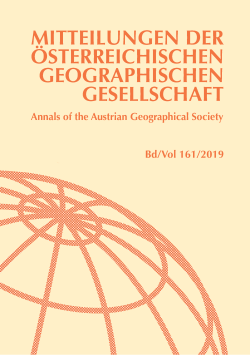
Mitteilungen der Österreichischen Geographischen Gesellschaft Band 161/2019, pp. 161-188, 2020/03/24
Band 161 (Jahresband), Wien 2019
Volume 161 (Annual volume), Vienna 2019

A polycentric network consists of urban functional areas with significant growth potential in the settlement network and a transport infrastructure that effectively interconnects them. Polycentric development is a key instrument for promoting economic competitiveness, social cohesion and environmental sustainability, and its assessment has a particular importance for the European strategies. The paper aims to assess the level of polycentricity of Romania based on a methodology developed by changing the one used in ESPON 1.1.1 by replacing the GDP with the turnover, multimodal accessibility with accessibility, and using a threshold of 30,000 inhabitants instead of 50,000 for the centres of functional urban areas. The results, consisting of country rankings based on size, location, connectivity, and polycentricity, were compared to those of ESPON 1.1.1. Romania ranked fifth in the top from the Polycentricity Index of ESPON countries, with a medium high level of polycentricity.
Keywords: Polycentricity, polycentricity aggregated indexes, polycentricity global index, functional urban areas, ESPON, Romania